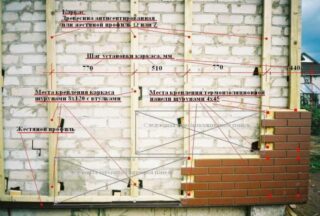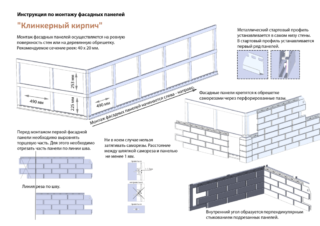A private brick house is a solid, reliable and durable building. However, the construction of such real estate requires impressive financial costs and time. To make a beautiful cladding, you can consider cladding the house with brick siding.
Features of brick siding
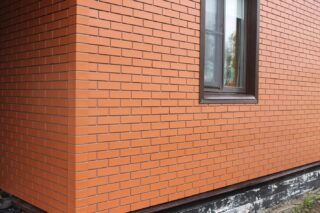
The peculiarity of the installation depends on the selected type of cladding panels, the material of the building, the evenness of the walls and the climate in the region. When installing any siding, it is necessary to create a space between the house and the cladding for ventilation and installation of insulation.
Siding paneling is used in the construction of new buildings and the restoration of old buildings. The material gives buildings aesthetics and protects the walls from destruction. The advantages of siding include the following factors:
- you can veneer any surface;
- for installation, a supporting crate is used;
- the possibility of additional insulation;
- long service life - on average 35 years;
- resistance to UV radiation;
- strength.
When choosing a material, its disadvantages are also taken into account:
- belonging to the fuel class;
- limited color solutions;
- installation requires skills;
- due to the weight of the panels, it is necessary to strengthen the foundation.
Despite the significant disadvantages, cladding a house with siding is cheaper than erecting a brick building. Caring for the material is simple - just wash off the dust with water. As a protection against fire, manufacturers apply special fire-resistant compounds to products.
Wood siding is a glued lining made from wood fibers followed by pressing under high pressure and temperature. Resins are added to the composition to strengthen the structure. For external coating, paintwork materials are used to protect the material from the aggressive effects of the external environment.
Types of siding panels
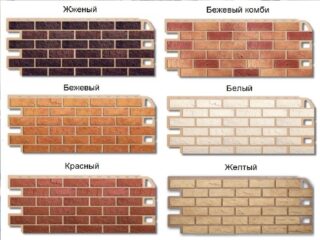
Manufacturers supply the market with a wide range of cladding panels. When choosing options for finishing a house with do-it-yourself brick siding, you should pay attention to the materials from which they are made:
- Vinyl - has bright colors that remain intact after 10 years. The cellular structure of the panels reliably protects the building from heat loss.
- Metal - panels are made of aluminum and galvanized steel.
- Fiber cement - belongs to the premium class among the materials for facade cladding. The products are distinguished by a long service life, level of flammability G0 and G1, resistance to water and frost.
- Basement - the material is based on PVC or cement. The structure completely imitates brick. Has the same technical properties as fiber cement siding. Installation of the material on the basement floor requires the purchase of panels with a minimum thickness of 3 mm.
Siding with imitation brick is made in dimensions 0.8x0.6 cm with a thickness of 2.6 mm and an external angle of 0.16x0.6 m. For reliable fixation, manufacturers equip the material with a reinforced Click Shloss lock system.
Darker types of panels are more expensive, because in the process of their manufacture, a color stabilizer is added to the composition. More pigments are required.
Laying technology
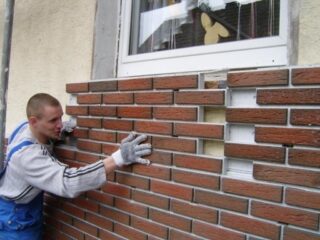
To make siding for bricks with your own hands, preliminary calculations are carried out to draw up an estimate. The scheme allows you not to make a mistake in the procurement of materials.For these purposes, you can use an online calculator or the formula: (wall length x width) + S of all walls.
The figures obtained are compared with typical siding panel sizes to calculate the quantity to be purchased. It is necessary to take into account the window and door openings, which must also be clad from the outside. At the time of purchasing the material, you need to make a small stock - 10-13% of the total mass.
For independent work on facing a brick house with siding panels, use the step-by-step instructions. Before installing the battens, prepare the surface by removing plants, equipment, ebbs and other elements.
Frame
- The metal frame is a galvanized product, resistant to moisture. The only drawback is that it takes a lot of time and a helper to trim and fit the fragments.
- The lathing from the bar is easily fixed and processed. It can be used for surfaces with any relief.
Before installing the wooden frame, treat the elements with antiseptic preparations. In this case, the material will be less exposed to moisture and will last longer.
Warming
Before the start of outdoor work, insulation is laid on the walls. Installation is carried out from the bottom up. Control the tightness of the heat-insulating materials to the frame with fixation on dowels or self-tapping screws for metal.
To increase the water-repellent properties of the selected material, cover it on top with a waterproofing film. Then install a second layer of battens, creating a 40 cm ventilation gap.
Attachment procedure
Corner parts are fixed strictly vertically. They are installed 0.8 cm below the edge of the first plank. Along the upper harness, they should not reach the cornice ~ 0.6 cm.
Window finishes
To clad window and door openings, it is necessary to purchase a starter profile. The platband is pre-cut at an angle of 45 ° - installation starts from the bottom element. The clypeus is fixed along the perimeter with a tight fit of the fragments. In the future, it will become the basis for attaching siding panels.
The window cornice is sheathed after the marking is carried out strictly parallel to the ground. Then the rope is pulled or controlled by a laser level. The edges of the fasteners are also checked with a grinder.
Facade decoration recommendations
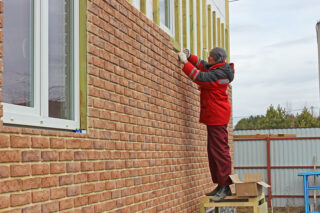
Siding is a modern version of building cladding, the purpose of which is to save time, insulate walls and give the house an aesthetic look. It is recommended to entrust the installation to professionals, since many nuances must be taken into account. Therefore, starting to work on your own, you need to weigh your own capabilities.
For a successful facade decoration, use the recommendations of designers and builders:
- Discard the combination of wood and brick. It is better to supplement natural materials with a similar texture. For example, lumber goes well with shingles.
- For building cladding, it is better to stick to monochrome or use two shades. Darker colors are used in the basement or corners of the building.
- Muted shades can be used for revealing window and door openings.
- To achieve a uniform color on the facade, when buying building materials, take products from one batch.
- To care for siding panels, it is enough to periodically wash them with water from a hose under pressure.
For the decoration of the house, you can pick up inexpensive Russian-made materials, for example, "Keramite".In appearance, the panels ideally imitate brickwork. The products are delivered to the market in packs of 10 pieces.

